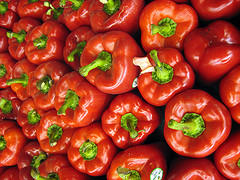
Chew on These Fascinating Facts About Flavors and Taste
September 26, 2014 | cwsapts
Your friend loves blue cheese, but you can't stomach the taste of it. Ever wonder why flavors appeal to some but not others? It all has to do with taste, and there's a complex science behind it. Read on to find some fascinating facts about taste and flavor:
1) We can process up to five different types of flavors: sweet, salty, bitter, sour, and savoriness, which is called umami. All of the taste cells on our tongue can detect every flavor, contrary to popular belief. Other senses, such as smell, taste, and sight, also play a part in taste. Have you ever seen someone hold their nose to finish eating an item they find particularly disgusting? This actually isn't a bad idea. While our tongue can determine if something is sweet, it cannot determine the flavor. (Try the jelly bean experiment to see what we mean!)
2) Genetics and upbringing play a role in taste. Some people have a heightened concentration of taste receptors, which can cause certain foods to seem more flavorful (or unpleasant!) to them than to other people. Taste preferences are largely determined by what foods you ate when growing up, as well. Not only will you become accustomed to Mom or Dad's cooking, you'll develop a nostalgic feeling for the food as an adult, which makes the food seem even more appetizing.
3) You can train yourself to like a certain food. Repeat exposure to a certain food might help you dislike it less. If, for example, you hate tomatoes but continue to force yourself to eat them, after a while it won't become such an unpleasant experience. However, if you really don't like a certain food, it might just be hardwired into your genetic code!
How Taste Works [HowStuffWorks]
The Science of Taste [KitchenGeekery]
7 Factors That Change Your Sense Of Taste [Popular Science]
The Science Behind Taste [Linden High School Spanish Club]
